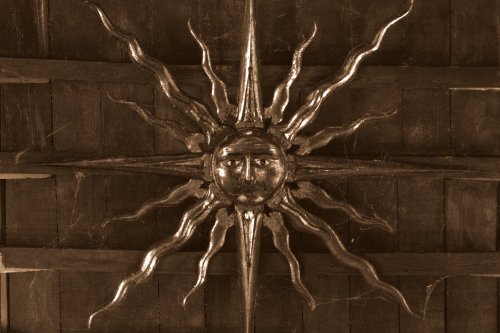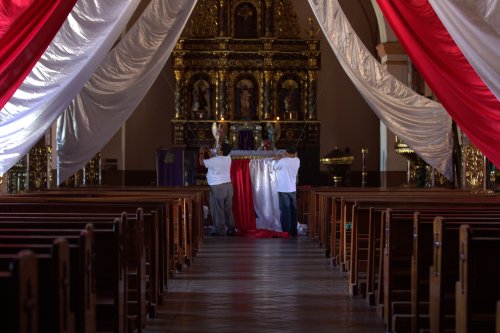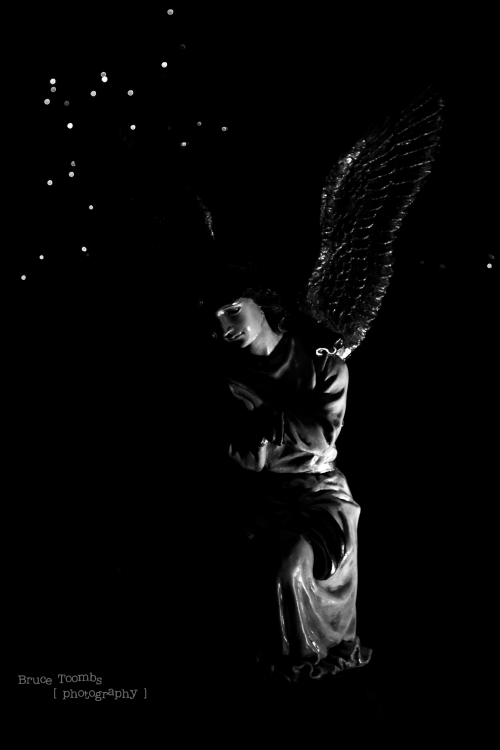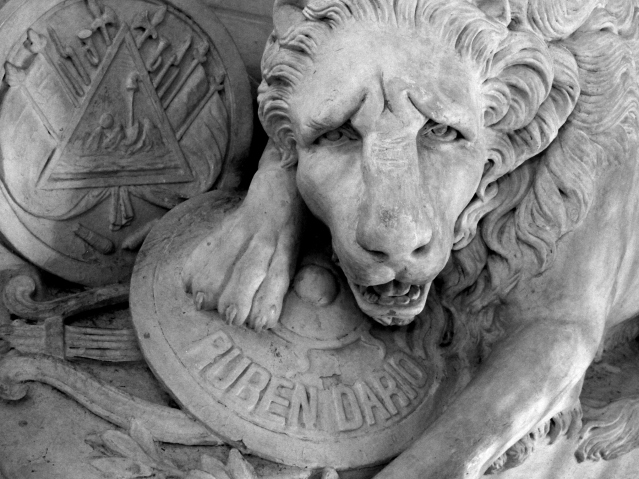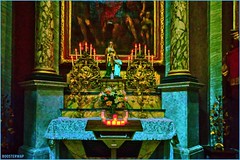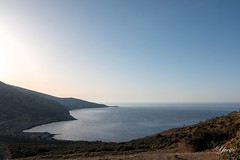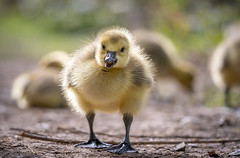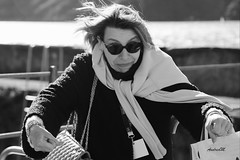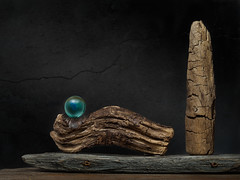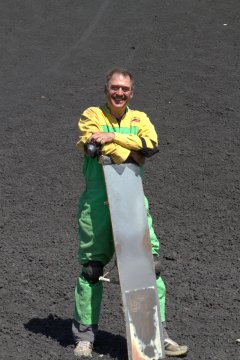 At some point along the way, someone with a lot of imagination looked at a live volcano and said, “I think I’ll slide down the side of that volcano on a board. I’ll call it volcano boarding”. This person was a nut. Brilliant, though.
At some point along the way, someone with a lot of imagination looked at a live volcano and said, “I think I’ll slide down the side of that volcano on a board. I’ll call it volcano boarding”. This person was a nut. Brilliant, though.
I have to add that, because I went volcano boarding today.
Actually, I have been up and down two volcanoes in the last three days, though I only slid down one of them on a board. Both were live volcanoes, and both had erupted fairly recently (one of them last year, the other in 1999), but for me the comparison pretty much stops there. The two could not have been more different. The first one, which we climbed on Christmas day, was Telica, which last erupted in 2011. It’s a long, beautiful hike to the top, through an alternating pattern of rugged red igneous terrain and lovely peaceful meadows.

San Cristobal shortly before its most recent eruption.

San Cristobal erupting, a couple of days after the previous photo. Incidentally, the reddish volcano to the right, just in front of San Cristobal, is Telica.
As we climbed we were able to see another volcano more and more clearly – Telica offers an extremely good view of the San Cristobal volcano, which started erupting the night of December 25th (just hours after the photo here was taken). That volcano is currently throwing out massive quantities of ash and smoke, and a “Yellow” alert has been called for the area – the second highest disaster warning level in Nicaragua.
So. We arrived at the top, by design, at just before sunset, watched the sunset, then walked around the crater to a point where we were able to look down in the dark to see and hear the lava (or is it magma?) at the bottom, about 125 meters down. I lay on my belly at the edge, found a suitable rock (not having a tripod with me), and held my camera perfectly still for a few long exposures – 6 seconds, 8 seconds, 11 seconds. Here is one of the photos that resulted:

A long exposure of the lava flow at the bottom of the crater of the Telica Volcano in northern Nicaragua.
That was Telica. Cerro Negro, where Cas and I went volcano boarding today is what is known as a basaltic cinder cone volcano. It is almost completely black and lifeless, but for the occasional plant struggling between the rocks. On one side of it are great boulders (and smaller stones), thrown up by the force of various explosions, while the slope on the other side is a fine grain – not sand, exactly, but too small to be called stones. In the centre is a horseshoe-shaped crater of black, yellow, red and white (carbon, sulphur, iron and iodine) with a bulge in the middle that is slowly growing under pressure from below. We were told today that volcanologists say that it is due to blow some time soon, but that there is a monitoring station that ought to be able to give about 2 days notice before it happens.
Yeah, well. The cone is slowly growing. That’s all I needed to know. Incidentally, Cerro Negro is the youngest volcano in Central America at only 162 years old (it first appeared in 1850). It sticks out of the green surrounding area like a black pimple.
So basically, what you do is walk to the top of the volcano. It’s a 40 degree angle, so needless to say you don’t climb straight up but rather wind around the outside a bit, on the “back” side where all the boulders are. You walk along the rim of the crater, and then come out on top. Look at the view. Pose for some pictures. Get into your overalls (we had signed up with a good tour company, which offers these green and yellow coveralls along with elbow and knee pads, in addition to gloves and goggles. We saw some others going down in their regular clothes with just goggles and did not envy them).
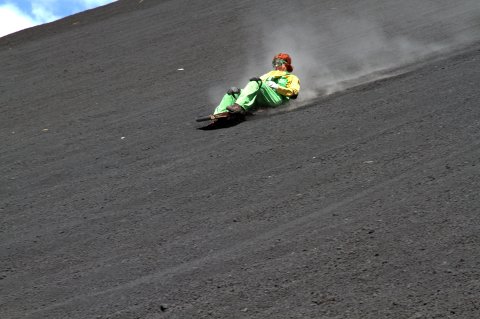
Cas skootching down the side of the volcano. At least, we said, if it starts to erupt while we’re on it we will have a quick way down!
Then you get on your board, do a little training session with the guide, and either shoot down like a toboggan or swoosh down like a snowboarder. We tobogganed.
And yes, it was a blast. But not that bad, eruption kind of blast.

Sunset from Telica Volcano.

